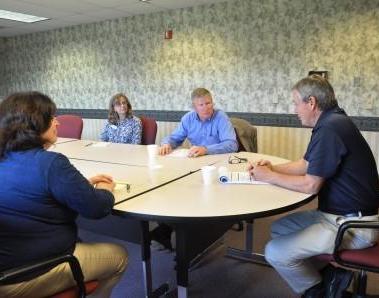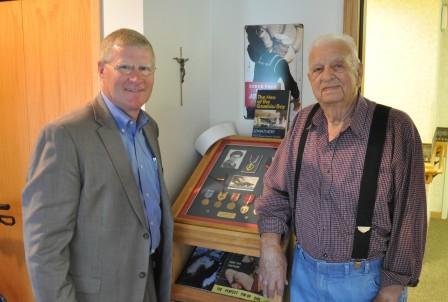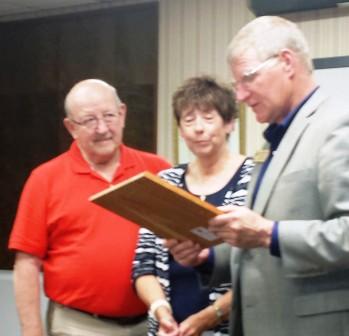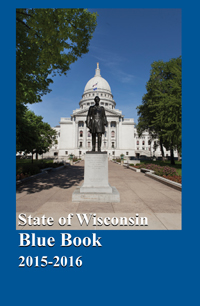|
H.O.P.E
for Ending Drug Addiction & Abuse
I recently attended a funeral for the son of a former colleague who died
from a drug overdose. At 27 years of age, Chadís addiction to pain medication
after a car accident, took his life.
Chadís story is not unique. In 2014, 21.5 million Americans struggled with
some sort of substance abuse. Of this number, 1.9 million were addicted to
prescription pain relievers and 586,000 had a substance use disorder
involving heroine. Most of us would see heroin as a bigger problem, but
clearly, prescription drugs are a major threat and many heroin users begin as
prescription drug abusers.
Prescription pain relievers are legal opioid medications that include drugs
such as oxycodone, hydrocodone, codeine, morphine, and fentanyl. Anyone who
has had a surgery or injury within the last several years has likely been
prescribed an opioid pain reliever.
Every personís body reacts to pain and pain medication differently. Many
people seek temporary relief from prescription pain medication because they
donít want to become addicted or limit their ability to perform day-to-day
tasks; while others refuse to take any sort of opioid prescription at all.
Others, despite their best intentions, cannot manage without strong pain
relief and ultimately succumb to the addictive qualities of these drugs.
Unfortunately, our culture has become less tolerant for pain overall. When we
are injured or undergo a surgery, our doctors nearly always offer us pain
relief, whether we ask for it or not. As a society, we rate the performance
of our medical providers by how much pain we feel and as a response, our medical
providers prescribe medication to lessen our pain in order to achieve the
best possible ratings from us.
With the increasing threat posed by prescription drug addiction throughout
our communities, I believe it is time to consider ďpainĒ differently. When we
are injured or we have surgery, isnít pain meant to be a signal to us? Isnít
pain meant to tell us when we need to rest and recover? Isnít pain a
necessary part of the healing process? Why do we, as a culture, reject pain?
In our rejection and avoidance of pain, we have opened ourselves to addictive
drugs that are destroying families and taking lives from us every single day,
out in the open, in our homes, our schools and our communities. These drugs
are not the back alley, dark of night, drugs of the movies. These are every
day, prescribed medications that are completely legal and in ready supply.
According to the American Society of Addiction Medicine (ASAM), drug overdose
is the leading cause of accidental death in the United States, with more than
47,000 lethal drug overdoses in 2014. Opioid addiction is a huge part of this
statistic, as almost 19,000 of these overdoses were related to opioids.
10,500 of these overdoses were related to heroin use. ASAM estimates that
four in five new heroin users started out by misusing prescription pain
killers. It is estimated that 23% of individuals who use heroin also develop
an opioid addiction. Nationally, the rate of heroin overdoses showed an
average increase of 6% per year from 2000 to 2010. From 2010 to 2013, the
average annual increase jumped to 37%.
The 17th Senate District borders two other states. This makes our communities
uniquely susceptible to drugs moving across state lines from outside
Wisconsin. Addressing opioid addiction in Wisconsin requires the support of
legislators and leaders from across the state, regardless of political party.
This past session, in response to this nationwide epidemic, Wisconsin
legislators created the Heroin, Opioid, Prevention, and Education (HOPE)
legislative package. All of these bills were created and passed on a
bipartisan basis to address opioid and heroin addiction.
In total, between 2013 and 2016, there were 17 bills passed and signed into
law that combat the opioid epidemic in Wisconsin. Last session, bills were
passed that focused on encouraging municipalities to conduct drug disposal
programs, provided emergency workers the ability to administer Naloxone
Narcan to combat the effects of heroin overdose, required individuals to show
proper identification when picking up certain prescription drugs, provided
limited immunity for those individuals reporting an overdose, expanded
Treatment & Alternative (TAD) programs, created pilot programs to treat
opiate addiction in underserved areas, and created immediate punishments for
those who violated parole or probation.
In the future, legislators plan to build upon the HOPE agenda by expanding
access to treatment options, increasing access to naloxone, and expanding the
Good Samaritan law. There are already efforts to collaborate with insurance
providers to increase access to treatment for those struggling with addiction
and gathering data on victims of overdose to learn more help guide further
policy-making.
I also think it is important for us, as a culture, to explore ways to
decrease the exposure of all people to pain medication by managing our own
expectations of pain when we are injured or undergo a surgery. We need to
accept that pain is part of the function of the human body. I have directed
my physician to not give me any opioid pain medications, unless I am in
hospice.
I am optimistic that the HOPE legislation signed into law will be an
effective effort to decrease use and addiction in Wisconsin. For more
information on opioid addiction and the legislation that has been signed into
law to combat this epidemic, please visit http://legis.wisconsin.gov/assembly/hope/
|
|
In The 17th Senate District

Sen.
Marklein was invited to visit Greenway Manor in Spring Green to learn more
about the facility, meet administrators, staff and residents.

During
his visit, he had a great conversation with Clete Ring (photo on the left),
who was recently featured
in the Wisconsin State Journal for his experiences during the sinking of
the USS Gambier Bay during World War II.

Congratulations
to the Platteville School District for receiving a Best Community for Music
Education award by the NAMM Foundation for the second year in a row! I was
honored to be a part of their celebration on Monday!
(Photo
courtesy of Steve Prestegard The Platteville Journal )

Sue
Johnson of Reedsburg was named the Person of the Year by the Reedsburg Rotary
Club for her many years of service to our community. Sue and her late husband
Michael started the Open Table Meal in 2009. She also volunteers at
Circus World and the Reedsburg Area Medical Center. Sue was a teacher
in the Wisconsin Dells School District after serving with the National Guard
for 20 years. Sen. Marklein was honored to present Sue with a
proclamation recognizing her service and award.
|
|
Useful
Information
UW
System Enrollment & Graduation Rates
The University of Wisconsin System provides a Dashboard tool to measure a
wide variety of statistics and data related to the colleges and universities
in our state. You
may access all of the data here. The following table illustrates
enrollment and graduation rates at all of the four-year campuses.
|
Campus
|
Undergraduate Enrollment
2015
|
4-year Graduation Rate
(Entering Fall 2010)
|
6-year Graduation Rate
(Entering Fall 2008)
|
Bachelor Degrees
Confirmed
(2014-2015)
|
|
UW System
|
180,979
|
31.0%
|
60.7%
|
24,427
|
|
UW-Eau Claire
|
9,956
|
30.4%
|
68.2%
|
2,120
|
|
UW-Green Bay
|
6,528
|
23.9%
|
50.6%
|
1,272
|
|
UW-LaCrosse
|
9,702
|
35.9%
|
68.4%
|
1,938
|
|
UW-Madison
|
31,365
|
56.4%
|
83.7%
|
6,854
|
|
UW- Milwaukee
|
22,284
|
13.6%
|
43.5%
|
3,688
|
|
UW-Oshkosh
|
12,710
|
18.1%
|
54.3%
|
2,040
|
|
UW- Parkside
|
4,300
|
5.6%
|
30.6%
|
698
|
|
UW-Platteville
|
7,983
|
19.4%
|
51.6%
|
1,424
|
|
UW-River Falls
|
5,507
|
29.3%
|
54.3%
|
1,230
|
|
UW-Stevens Point
|
8,857
|
30.4%
|
60.2%
|
1,866
|
|
UW-Stout
|
8,388
|
20.6%
|
53.2%
|
1,672
|
|
UW-Superior
|
2,362
|
21.7%
|
43.2%
|
472
|
|
UW-Whitewater
|
11,142
|
29%
|
57.7%
|
2,151
|
|








